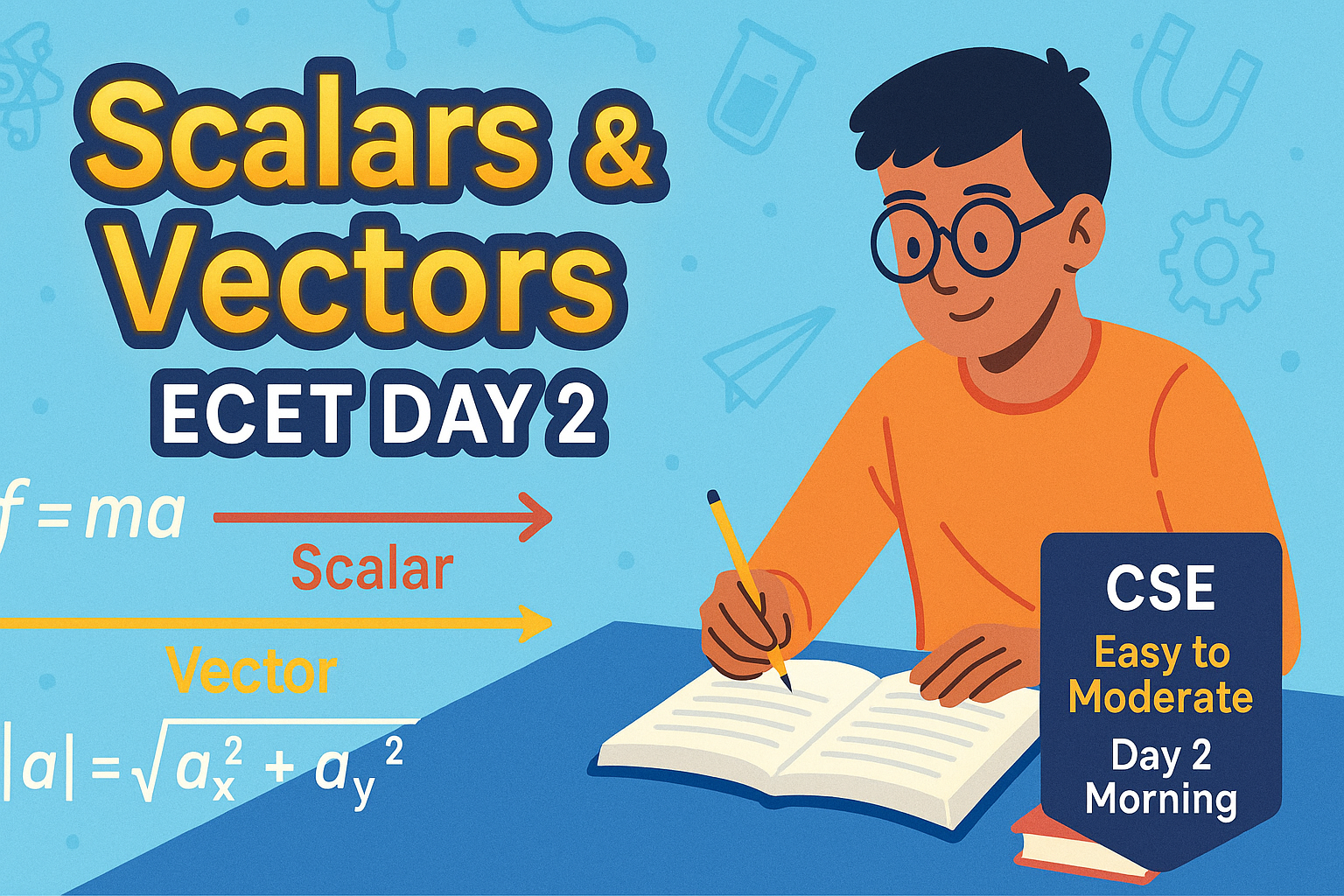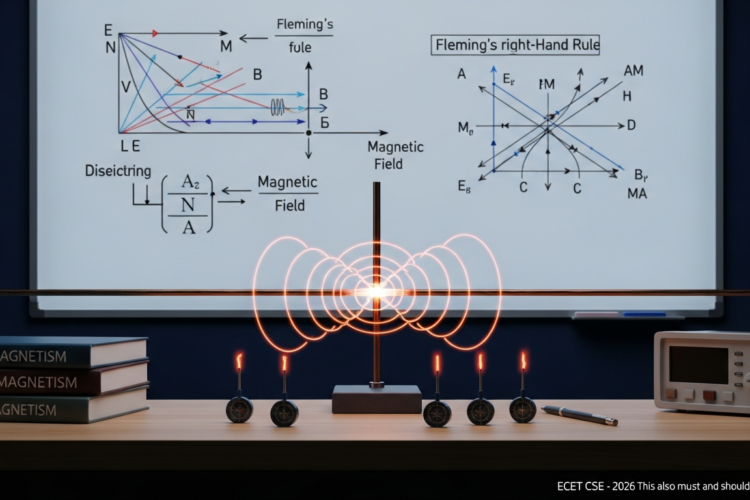
Preparing for ECET 2026 under the C-23 syllabus? You’ve landed in the right place! “Scalars & Vectors” is a key concept in Physics, and understanding it will help you crack easy-to-moderate questions in the exam. This topic forms the base for solving real-world engineering problems involving force, motion, and direction. Let’s quickly revise and practice this topic with a set of 10 targeted MCQs that mirror ECET-style questioning.
📘 Concept Notes: Scalars & Vectors (ECET-Oriented)
✅ What are Scalars?
- Quantities that have only magnitude, not direction.
- Represented by ordinary symbols (e.g., distance, speed, time, temperature).
Examples:
- Distance = 10 m
- Speed = 60 km/h
- Time = 2 seconds
✅ What are Vectors?
- Quantities that have both magnitude and direction.
- Represented with arrows or bold letters.
Examples:
- Displacement = 10 m North
- Velocity = 60 km/h West
- Force = 5 N at 30° angle
✅ Key Points to Remember:
- Vectors follow vector addition rules; Scalars follow simple algebra.
- The resultant of vectors depends on angle and direction.
- Common vector operations: Addition, Subtraction, Dot Product, Cross Product.
🔄 Scalar vs Vector:
| Property | Scalar | Vector |
|---|---|---|
| Direction | Not Required | Required |
| Operation | Simple Algebra | Vector Rules |
| Examples | Mass, Time | Force, Acceleration |
🔟 10 Expected ECET 2026 MCQs – Scalars & Vectors
Q1. Which of the following is a scalar quantity?
A) Velocity
B) Force
C) Temperature
D) Acceleration
Q2. The quantity that has both magnitude and direction is:
A) Mass
B) Work
C) Time
D) Displacement
Q3. If a body covers 10 m North and then 10 m South, what is the displacement?
A) 0 m
B) 20 m
C) 10 m
D) 5 m
Q4. Which operation is used when adding vectors?
A) Algebraic addition
B) Trigonometric addition
C) Scalar product
D) Matrix addition
Q5. Which of these is not a vector?
A) Momentum
B) Work
C) Acceleration
D) Displacement
Q6. Which of the following quantities is always positive?
A) Displacement
B) Velocity
C) Distance
D) Acceleration
Q7. What is the unit of force?
A) Watt
B) Joule
C) Newton
D) Pascal
Q8. A scalar quantity is completely described by:
A) Direction only
B) Magnitude only
C) Both magnitude and direction
D) Neither
Q9. The angle between two perpendicular vectors is:
A) 0°
B) 90°
C) 180°
D) 360°
Q10. Which one is the correct example of scalar quantity?
A) 10 m North
B) 5 N
C) 2 sec
D) 30 km/h East
✅ Answer Key Table
| Q.No | Answer |
|---|---|
| 1 | C |
| 2 | D |
| 3 | A |
| 4 | B |
| 5 | B |
| 6 | C |
| 7 | C |
| 8 | B |
| 9 | B |
| 10 | C |
🧠 Explanation of Answers
Q1 → C: Temperature has magnitude but no direction, hence it’s scalar.
Q2 → D: Displacement is a vector as it includes direction.
Q3 → A: 10 m North + 10 m South = Net Displacement = 0 m.
Q4 → B: Vectors require trigonometric (parallelogram) addition.
Q5 → B: Work is a scalar (even though it’s derived from force).
Q6 → C: Distance is always positive; it’s scalar.
Q7 → C: SI unit of Force = Newton (N).
Q8 → B: Scalars need only magnitude to be described.
Q9 → B: Perpendicular = 90° angle.
Q10 → C: “2 sec” is scalar (only magnitude, no direction).
🎯 Why This Practice Matters for ECET 2026
Practicing topic-wise MCQs not only builds conceptual clarity but also enhances your time management and accuracy in the ECET exam. Scalars & Vectors is often asked in 1-mark direct questions—an easy scoring area if you’re well-prepared. These MCQs are curated as per the C-23 Diploma Curriculum, matching ECET exam patterns and difficulty levels.
📲 Join Our Free ECET Telegram Group
For daily MCQs, notes, and updates – join our free student hub here:
👉 @LearnNewThingsHub



